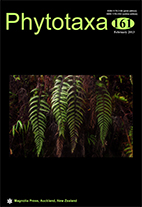Abstract
Buddleja caryopteridifolia was treated as a synonym of B. crispa in Flora of China. However, it was found that the two entities had different phenologies as well as morphology in the sympatric habitat investigated. Buddleja crispa flowers from mid-March to mid-May while B. caryopteridifolia blooms from early June to mid-September. In this study, the comprehensive comparative analyses of morphological traits, floral scent composition and amplified fragment length polymorphism (AFLP) data were utilized to determine whether B. caryopteridifolia should be recognized as a separate species. Among 13 morphological characters, all but calyx length were significantly different (all p<0.05, t-test) between the two species. Both cluster analysis and principal coordinates analysis (PCoA) of AFLP markers produced two distinct clusters for B. crispa and B. caryopteridifolia. The results of floral scent indicated several differences between B. crispa and B. caryopteridifolia. The main volatile compound of B. crispa was Benzaldehyde, while that of B. caryopteridifolia mostly consisted of trans-β-Ocimene. Therefore, all analyses supported the rehabilitation of B. caryopteridifolia as an independent species.

